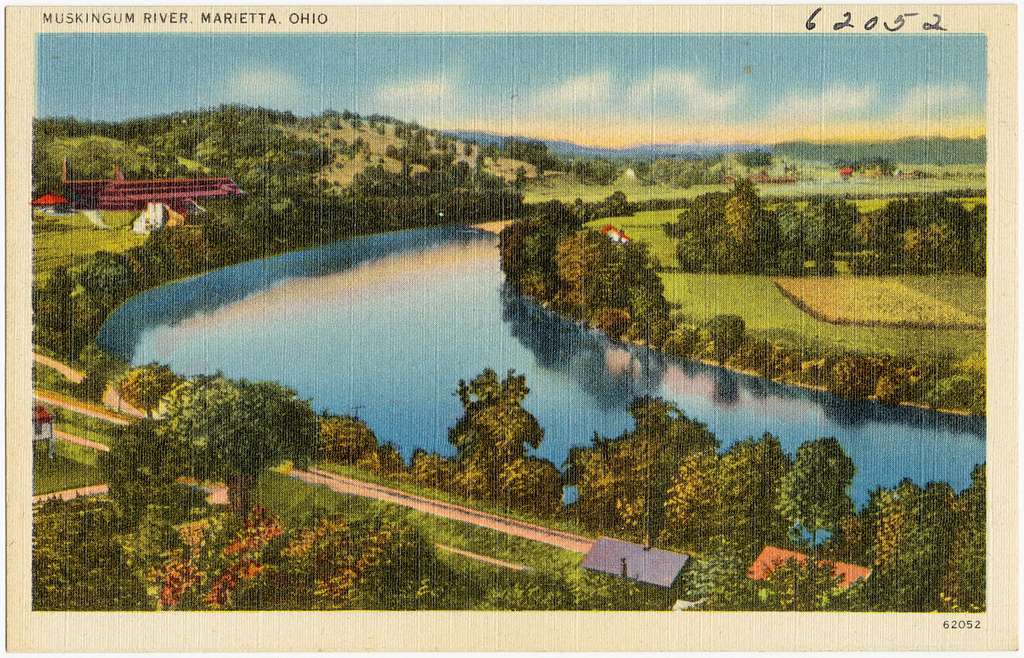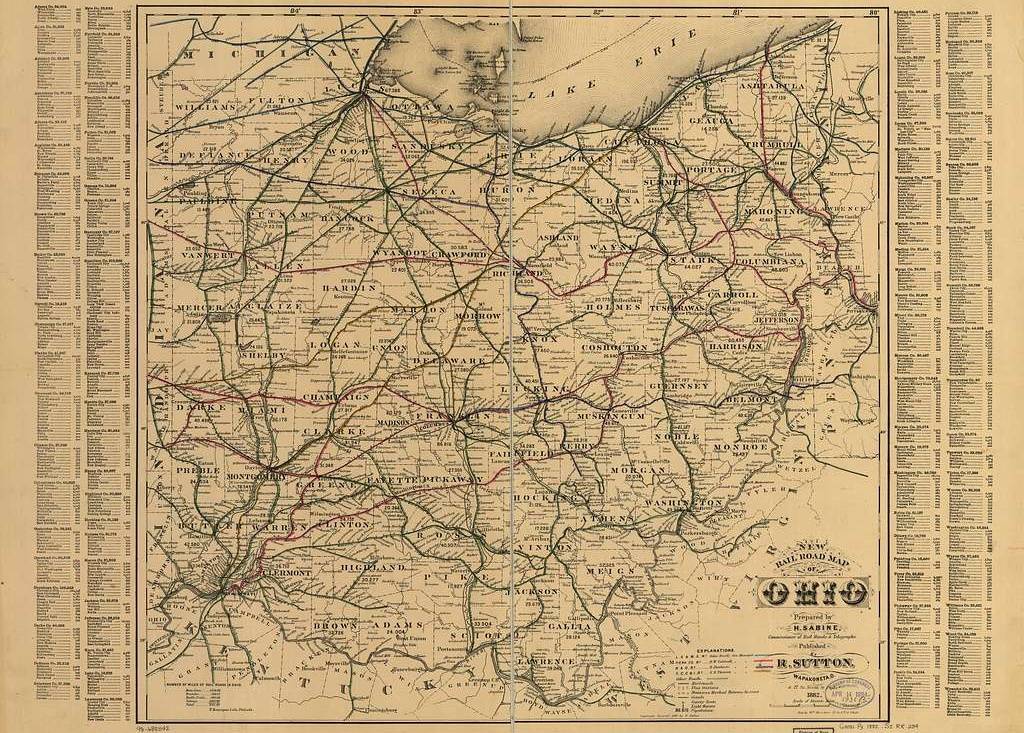In the previous post I noted that there had only been a single trial for witchcraft in Ohio. There had also only been one individual who was put to death after being accused of being a witch. Surprisingly, there wasn’t really any witchcraft going on in either case. The witch was deemed innocent because she weighed more than a bible, and the man was accused of witchcraft because that was easier than trying to explain complicated political fallacies.
Yet, real witches (including one semi-famous one) have lived and practiced their craft on Ohio soil … but this story starts, as so many of them do, in a land far, far away.
Gerald’s Story
Gerald Gardner was born on June 13, 1884 in Blundellsands, Lancashire, which is somewhere north of Liverpool, England. His family was of the upper middle class, so that afforded them a certain lifestyle, the ability to travel, and it gave Gerald an excellent education.
Even from an early age, Gerald was interested in learning about different cultures, showing an interest in anthropology and archeology. But he was also interested in various esoteric subjects, including occult studies.
According to Gerald, he came into contact with a group of pagan witches in the New Forest area that was able to fill a void he felt in his life after joining, then becoming disillusioned with a particular order of Rosicrucianism. When he met with these witches, he immediately felt a kinship with them. A couple of their members claimed to have known him in a past life, so he was asked to join.
His initiation ceremony was held in the basement of a home owned by a member they called Old Dorothy, who is believed to have been Dorothy Clutterbuck. Or, maybe it wasn’t her…?
It is important to stop here for just a moment. When Gerald told his story during his lifetime, the entire story was taken for historical fact as many of the details were easily verifiable. More modern scholars, however, have started to question the story’s more minute details, the true identity of Old Dorothy among them. Dorothy Clutterbuck was known to be very socially active in her local Anglican church, which had led many to seriously doubt her involvement with a pagan coven. More scholars claim that her “Christianity” was social in nature, that Dorothy was just playing the role of a good Christian woman while her heart was dancing naked under the moonlight in a grove of trees not far away.
The funny thing here is that Dorothy kept diaries that both sides have tried to use to prove their case. So, at this point, I don’t think that mystery will ever be solved.
Further scholars have pointed out that Gerald may have had reasons to alter certain facts of his story, either as a way to protect the names of people who may have suffered if such knowledge had become known, or because of a misunderstanding of some sort.
Gerald’s involvement in The New Forest Coven did, possibly, play a role in history a few years after his initiation as part of a Cone of Power ritual that was organized to a large extent by the coven. The ritual took place toward the end of World War Two as England feared it could soon see an invasion from Nazi forces. On Lamas Night, the coven would gather to visualize (and perhaps magically manifest) a cone of power over England that would hopefully keep the nation safe. Or, maybe it would send a message to Hitler himself that England was not a country to be bargained with, since the Fuher was rather interested in all things occult. The coven also believed that the more covens that joined in on the ritual, the larger impact it would have. So, they contacted every coven, every witch they could find and asked them to perform the same (or a similar) ritual that night. Whether or not it worked is a matter of debate, but Nazi forces did retreat and never actually got around to invading England.
In 1954, Gerald published a book titled Witchcraft Today, and in 1959 he published The Meaning of Witchcraft, the two books that laid the foundation for the modern pagan religion of Wicca.
Raymond Buckland

Raymond Buckland was born on August 31, 1934 in London England and like Gerald Gardner, he too came from an upper middle class family and showed quite an interest in esoteric subjects and the occult. Unlike Gardner, he was of a somewhat mixed race, with an English father and an English Gypsy mother. Also, unlike Gardner, in 1961 he and his wife emigrated to The United States, residing in Long Island (so, at least we’re getting a little closer to Ohio, geographically.)
It was while he was living in Long Island that he read two books that had a profound impact on him spiritually: The Witch-Cult in Western Europe by Margaret Murray and Witchcraft Today by Gerald Gardner. This, in part, inspired Raymond to travel to Scotland where he and his wife were initiated by Lady Olwen into a coven. Gerald Gardner himself was there, but considering he was a bit on the older side of life, he didn’t participate much, if at all.
Once back in the USA, Raymond Buckland and his wife formed a coven in the Brentwood area. To help this, they brought back with them the Book of Shadows (a book containing rituals and spells and information about witchcraft) from the Scottish coven. The only difference between this coven and the Scottish one is that the American one would focus more on the Anglo-Saxon mythology, but otherwise the two covens were largely the same.
If living within a day’s drive of Salem, Massachusetts taught them anything, it would be the need for secrecy. They were concerned that Americans weren’t ready for the knowledge that people were practicing witchcraft in town.
All that changed when, without their permission, they were outed by journalist Lisa Hoffman of the New York Sunday News, at which time all Hell broke loose. (Not literally, thank goodness. Last thing New York needed was demonic entities running amok.)
Soon (and whoever thought this would be a good idea, I have no clue) Raymond would appear on WNEW-TV’s Alan Burke show (a show that Radio Personality Howard Stern once quipped that the only reason to watch the show was to see people getting yelled at).
By this time, Raymond had decided that rather than trying to hide, he would learn to embrace his newfound infamy, even learning to play into it from time to time. For example, he purchased a large black hearse that he would drive around town.
Raymond opened a “Witchcraft Museum” … except it was just a few “artifacts” and they were kept in his basement … and you really needed an appointment to see them. (And, presumably, if he thought you might be a bit wonky, he’s just hang up the phone on you.)
Raymond liked educating the public about Wicca and Witchcraft among other esoteric subjects. In 1969, he published his first book, A Pocket Guide to the Supernatural, followed by Practical Candleburning Rituals the following year as was Witchcraft Ancient and Modern was released. 1971 saw the release of Witchcraft From the Inside: Origins of the Fastest Growing Religious Movement in America, along with his first work of fiction, Mu Revealed under the pseudonym of Tony Earll (an anagram of “Not Really” in case you were wondering.)
Things seemed to be going fairly well for Raymond and his wife up until 1973 when the couple broke up, both left the coven they had formed, and went their separate ways. Raymond packed up all his things, including his basement “Witchcraft Museum” and headed for New Hampshire.
Along with the publication of his next book, The Tree: Complete Book of Saxon Witchcraft, he began teaching students about witchcraft (and within a year or two he was said to have had over a thousand students). He also got married again, this one lasting until 1978. This time he packed up everything and relocated again, but this time his “Basement Museum” went into storage, where it would stay for a little while.
The Book that Buckland was, perhaps most noted for was published in 1986, Buckland’s Complete Book of Witchcraft. Otherwise known as “The Big Blue Book” or BBB for short.
In 2008, Buckland’s “Witchcraft Museum” finally came out of storage and was placed under the care of the The Covenant of the Pentacle Wiccan Church in New Orleans. Although, perhaps “care” is a bad choice of words since they seemed to care little about it and paid it almost no attention.
By now, Raymond Buckland was living in Ohio (you knew we’d get here, eventually) and seemed to be dividing his time between the Cleveland and Columbus areas. He had helped form a few covens, including one called the Temple of Sacrifice in Columbus, who still controls The Raymond Buckland Museum of Witchcraft to this day. (It is on display, currently in Cleveland, though, not Columbus.)
Ohio Witchcraft Today
I know that some of you reading this probably came here thinking I was going to be talking about some old green lady with terrifying flying monkeys … or a group of “Charmed” sisters living in San Franscisco … or a pretty young lady who marries a man named Darrin, much to her mother’s dismay … or Holy Crap there’s a lot of television shows and movies about witches. (I think Cher, Susan Sarandon, and Michelle Pfeiffer are my favorites, although to be honest I haven’t been able to eat a bowl of cherries since.)
People don’t like to take talk of witches seriously either due to religious reasons, or because the images of them we see on television or in the movies are about as realistic as … I don’t know, a The Fast and The Furious movie is about driving a car. (Seriously, have those guys even seen a car? How is it possible they don’t know how those things work?)
What people fail to consider is that a very large part of modern witchcraft stems from the ancient pagan beliefs that were popular throughout Europe before Christianity showed up and tried to take over. Beliefs that never quite went away.
People like Gardiner and Buckland never tried to invent a new religion, although in a way that’s kind of what they did. Instead, their aim was to modernize ancient beliefs and put things into a context that was more understandable in modern times.
Part of the reason Paganism (or practicing witchcraft) became so popular around the 1970s was partly because of the work that people like Gardiner and Buckland (to name but two) but it was also a product of the times. By then the Women’s Liberation movement was starting to take hold and challenge long-held beliefs, including the roles that the churches at the time preached that women had to play. Suddenly there was something that said that women didn’t need to be subservient to men and could take a much more active role within their own spiritual journeys, a message that for some was very welcome.
Today, from time to time, we still get to hear anti-witchcraft messages, usually from more religious communities, but being a witch today is more acceptable than it ever was (although most witches will probably agree that there’s still a long way to go).
There are likely witches living in every county in Ohio, although (and probably for good reasons) they’re not always obvious to spot. They look like good, decent people … largely because many of them are just that. They’re just people with a different set of religious views and I hope we live in a world where there is nothing wrong with that.




Pingback: A History of Witches in Ohio (Part 1) - The Ohio Project